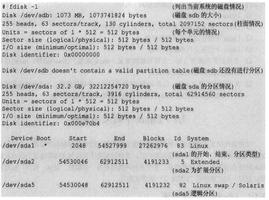Linux中信号量源码的分析

如果一个任务获取信号量失败,该任务就必须等待,直到其他任务释放信号量。本文的重点是,在Linux中,当有任务释放信号量之后,如何唤醒正在等待该信号量的任务。
信号量定义如下:
struct semaphore { raw_spinlock_t lock;
unsigned int count;
struct list_head wait_list;
};
其中wait_list链表用于管理因没有成功获取信号量而处于睡眠状态的任务。
任务通过调用down()函数,尝试获取信号量,如果获取信号量失败,调用__down()函数。__down()函数内部调用了__down_common函数。(事实上down()函数有多个变种,如down_interruptible,在获取信号量失败时调用__down_interruptible,__down_interruptible也会调用__down_common函数。不同的down()函数最终调用__down_common时传入不同的参数,以处理不同的获取信号量的情况)。
同时,整个down()函数使用sem->lock保护起来。
void down(struct semaphore *sem){
unsigned long flags;
raw_spin_lock_irqsave(&sem->lock, flags);
if (likely(sem->count > 0))
sem->count--;
else
__down(sem);
raw_spin_unlock_irqrestore(&sem->lock, flags);
}
static noinline void __sched __down(struct semaphore *sem)
{
__down_common(sem, TASK_UNINTERRUPTIBLE, MAX_SCHEDULE_TIMEOUT);
}
下面是重点:__down_common函数如何使任务休眠,休眠中的任务如何被唤醒并获得信号量。
semaphore_waiter是一个关键的数据结构,代表一个获取信号量失败,正在等待的任务。up字段标识了该任务是否是被该信号量唤醒,也就是休眠中的任务收到某种信号被唤醒之后,判断是否是被等待中的信号量唤醒的。
struct semaphore_waiter { struct list_head list;
struct task_struct *task;
bool up;
};
__down_common函数首先初始化了一个semaphore_waiter。task字段标识当前任务,up设置为false。
static inline int __sched __down_common(struct semaphore *sem, long state, long timeout)
{
struct semaphore_waiter waiter;
list_add_tail(&waiter.list, &sem->wait_list);
waiter.task = current;
waiter.up = false;
...
然后休眠当前任务,调用 schedule_timeout()主动让出 CPU。上文提到整个函数都是在sem->lock的临界区中,但是在自旋锁的临界区是不可以休眠的,所以这里实际上在休眠之前释放了锁,被唤醒之后再重新获得锁。
当任务被唤醒后,如果waiter.up是否为真,则该任务可以获得信号量。waiter.up是必须要判断的,取决于__set_current_state()函数传入的参数不同,任务可能处于不同的休眠状态,可能被不同的信号唤醒,而未必是被等待的信号唤醒。
for (;;) { if (signal_pending_state(state, current))
goto interrupted;
if (unlikely(timeout <= 0))
goto timed_out;
__set_current_state(state);
raw_spin_unlock_irq(&sem->lock);
timeout = schedule_timeout(timeout);
raw_spin_lock_irq(&sem->lock);
if (waiter.up)
return 0;
}
timed_out:
list_del(&waiter.list);
return -ETIME;
interrupted:
list_del(&waiter.list);
return -EINTR;
}
当一个任务释放信号量时,如果信号量的等待队列中存在任务,则将队列中的第一个任务的 up标记为true,并唤醒,同时从等待队列中删除。
同时,只有在等待队列为空的情况下,才会更新sem->count,确保了等待队列中的任务优先于新来的任务获得信号量,保证了严格的先进先出,不会因为新来的任务导致等待队列中的任务饥饿。
void up(struct semaphore *sem){
unsigned long flags;
raw_spin_lock_irqsave(&sem->lock, flags);
if (likely(list_empty(&sem->wait_list)))
sem->count++;
else
__up(sem);
raw_spin_unlock_irqrestore(&sem->lock, flags);
}
static noinline void __sched __up(struct semaphore *sem)
{
struct semaphore_waiter *waiter = list_first_entry(&sem->wait_list,
struct semaphore_waiter, list);
list_del(&waiter->list);
waiter->up = true;
wake_up_process(waiter->task);
}
任务被唤醒之后,检测到up为true,返回0,成功获得信号量。
以上是 Linux中信号量源码的分析 的全部内容, 来源链接: utcz.com/z/520355.html








